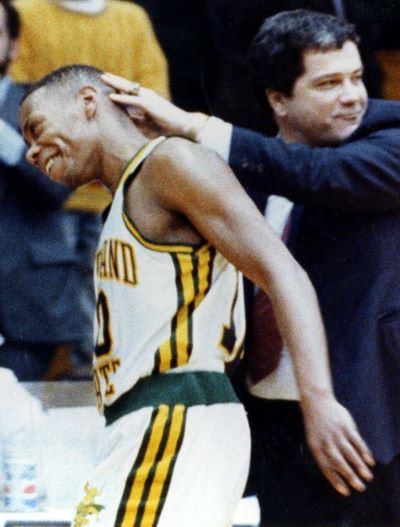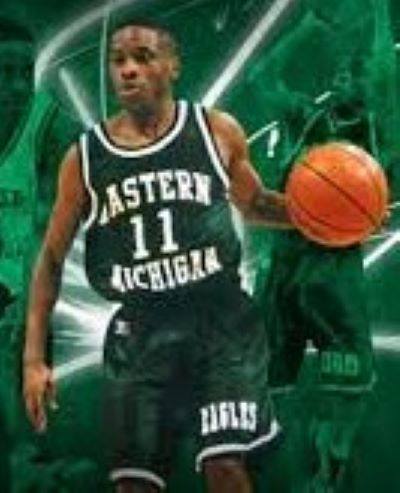|
This was always one of my favorite weeks, when I was working – the first round of the NCAA men’s tournament, when weird things could happen, and did.
I loved being in some arena, with eight – count ‘em, eight – teams still alive, still dreaming. Teams I never heard of during the long season, teams with fresh nicknames and gaudy colors and wired coaches and peppy cheerleaders and sassy mascots. Sometimes we were seated near the college bands, with their own characters and sizes and shapes and hair styles. Sometimes they were more fun to watch than the game. I have other events I love – any match in the World Cup of soccer, the U.S, Open of tennis in my home county, and just about any Mets game, because. Oops, almost forgot epic Stanley Cup finals of Islanders or Rangers, plus The Derby in Louisville, where we used to live. I remember my pal Charlie Pierce always loved the Saturday of the Final Four, but I hold out for the opening day, for the unknowns, the upsets, the slippery slopes. Take the first round in 1986. I was there, Perpetual contender Indiana was playing outsider Cleveland State. Before the game, Bobby Knight swaggered out to shake hands with his counterpart, Kevin Mackey, chubby little dude out of Boston. Some words were spoken, followed by cranky words and gestures from the terrible-tempered Knight. ''I said, 'Hey, take it easy on me, Big Guy,''' Mackey told reporters later. ''But, hey, he's no fool. I'll paraphrase his answer for you. He said: 'I'm not gonna give you any breaks out there.' '' I’ll bet he paraphrased Bobby Knight. Then, Cleveland State, seeded 14th in the region, promptly beat Indiana, seeded third, 83-79, and Knight, who liked to lecture reporters, said any fool knew that Cleveland State was loaded, with a guard named Mouse McFadden, New York City guy, who had somehow wound up at Cleveland State with an outlaw/outsider tag. I have to tell you, it was fun. And the fun continued to the next day when Cleveland State showed up early for its off-day media conference and witnessed the players from Navy – particularly David Robinson, close to his ultimate 7-foot-1 height, in spit-shine shoes and uniform and polysyllabic vocabulary and braces. Mouse and his mates were clearly impressed by Robinson's polished interview. Ten years later, double upsets on the first day: defending champion UCLA sleepwalked against Princeton, which cut them up with crisp interior passing, and I re-named the school “The University of Catatonia at Los Angeles.” The same first round, tiny Earl Boykins, looking like somebody’s sixth-grade kid brother, helped Eastern Michigan stun haughty Duke, 75-60. In the closing minutes, Boykins dawdled with the ball, staring into the stands while dribbling. It was his night. In the next round, little Boykins (admitting he might not even be his listed 5-foot-7) was beaten by Connecticut, whose coach, Jim Calhoun, raved that Eastern Michigan reminded him of his first coaching stop, with Northeastern in Boston -- outsiders, bootstrappers, who never gave up. You didn’t have to be at the game. In 1991, I turned on the television and watched Richmond, seeded 15th, coached by Dick Tarrant, city guy out of Fordham, play a brainy, resolute game to knock off Syracuse, 73-69 – the first time a 15th seed had defeated a second seed. The last barrier fell in 2018 when the University of Maryland, Baltimore County, defeated Virginia, 74-54. For a list of major upsets, see this. Last year, there were no upsets, no nothing. My alma mater, Hofstra, reached the finals of its conference tournament against Northeastern and Coach Joe Mihalich called a timeout and delivered an impassioned speech about playing the best five minutes of their lives – which they did, with baskets and stops and rebounds, and celebrated the victory for the next 24 hours….until the NCAA called off the tournament because some people in the country had figured out there was a pandemic going on. I later told Mihalich – a lifer, who made some of my old jock friends feel welcome -- that this was a great five minutes of coaching that he would always remember. Now Mihalich has missed this season for health reasons, and Hofstra fell short. Joe, you know what my Brooklyn Dodger fans used to say: “Wait til next year.” I pay almost no attention to college sports these days, but I have memories. At this time of year, when fellow Irish-Americans celebrate, I know it’s time for the NCAAs. This year’s entire tournament is being held in Indianapolis, a traditional center of basketball in this country. The players will keep the game going until the world gets back to some semblance of normal, when we can pay more attention to stomping coaches and high-flying players and acrobatic cheerleaders and crowded stands – and wide-eyed student lunatics in the pep band blaring saxophones. Plus, upset time. * * * My 1986 column on Cleveland State: https://www.nytimes.com/1986/03/16/sports/sports-of-the-times-the-secret-is-out.html My followup column on Mouse McFadden and how he got to Cleveland State: https://www.nytimes.com/1986/03/19/sports/sports-of-the-times-the-mouse-makes-the-grade.html My 1996 column on Earl Boykins: https://www.nytimes.com/1996/03/15/sports/sports-of-the-times-earl-boykins-has-arrived-on-the-scene.html When Indiana gave its heart to underdogs Princeton and Eastern Michigan. https://www.nytimes.com/1996/03/17/sports/sports-of-the-times-indiana-gives-its-heart-to-game-s-underdogs.html
Patrick O’Neill
3/17/2021 04:56:39 pm
George, thank you, this resonates for two reasons:
George Vecsey
3/18/2021 09:19:37 am
Patrick: Thank you for the great memory -- filed on the day of your namesake. (I'm a Plastic Paddy myself, courtesy of my grandmother.)
bruce
3/17/2021 05:16:44 pm
george,
George
3/18/2021 09:21:40 am
Bruce, don't know him....actually, I think Jimmy Fallon would play him in the movies, or vice versa Actually, I'm not sure what happened after his coaching career...GV 3/18/2021 09:44:36 am
Lehigh upset Duke 80-75 in the first round of the 2012 NCAA tournament McCollum led the team and he went on to have a good pro career.
George Vecsey
3/19/2021 10:27:41 am
Alan: So, Jen was kiting the M&Ms, eh? 3/19/2021 05:05:15 pm
Of the many exciting games that I have experienced watching on TV over the years, including the 1980 USA-USSR hockey game and many World Cups, the 1966 Texas Western upset of Kentucky is my favorite.
ED MARTIN
3/20/2021 12:44:18 pm
Another, memorable moment for me was when John Thompson and Georgetown eclipsed Lefty Driesel of Md. It was Driesell’s fall, not Md’s that pleased me. Later as a St.John’s fan, I still liked Thompson, (second to Louie), especially when he wore that sweater!
George
3/21/2021 03:52:17 pm
Ed: In 1986, in Lexington, I took a hike in the Red River Gorge in the morning, covered the amazing final at night. Villanova played a stunning game, for control. Neighbors of ours had a license plate:
George Vecsey
3/21/2021 03:47:26 pm
Alan, et al: I covered that UK-Texas Western final. in DC, en route to spring training, I wrote about the basketball upset while my mentor, Stan Isaacs, wrote about the all-black angle (both for Newsday, in 66) 3/21/2021 11:44:04 am
George-you certainly got your wish with a rash of early upsets. There seems to be some divine guidance with Oral Roberts's upset of Ohio State. Comments are closed.
|
Categories
All
|











